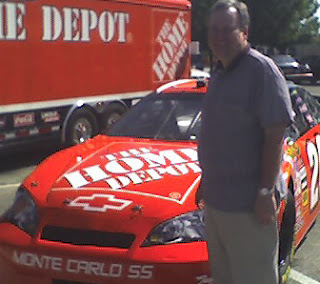

The first thing, you do is to install the wheel bearings after packing them with grease. I also had put off actually filling the tie rods and ball joints with grease, so that got added to the list too. I bought some new grease at AutoZone today, because the last stuff I got was not premium stuff, and I had spilled most of it anyway trying to get it loaded into the gun. Well, today I spilled the rest of that as I was taking out the old cannister to replace it with the new. For a while I tried wearing gloves, but that stuff just manages to get everywhere. Mostly on my clothes. (Tomorrow I am going to buy some new shorts that I can wear in public). Eventually, I got the bearings greased, and I think I got enough into the suspension parts previously installed.
Here is a finished picture...

And my reward for a job well done, a Jolly Rancher bombpop from the treat wagon that drove through the neighborhood.

Fortified with frozen goodness, I decided to press on and install the front brakes. It was pretty easy, but kind of surprisingly loose fitting. The brake pads are installed in the calipers and just "float" there. They cannot come off, as the bolts that hold them to the caliper mounting brackets which I installed first are in the way. I checked it online a couple of places and am assured that it is right.
Here is the passenger side (PS) brake on the rotor...

And the driver side (DS)...

Finally, a decent picture showing the DS hub, rotor, and brake...

This finishes Chapter 6. Next up, theoretically, is to run the brake and fuel lines. To do this, however, requires me to make a decision about my engine. The fuel system is different if I choose to use fuel injection (EFI) versus a carburetor--the fuel pump has to be located differently, and there needs to be a special return line from the engine for EFI. Instead, I may work on my wheels, and buy some tires to make what I have a "rolling chasis". We shall see.




